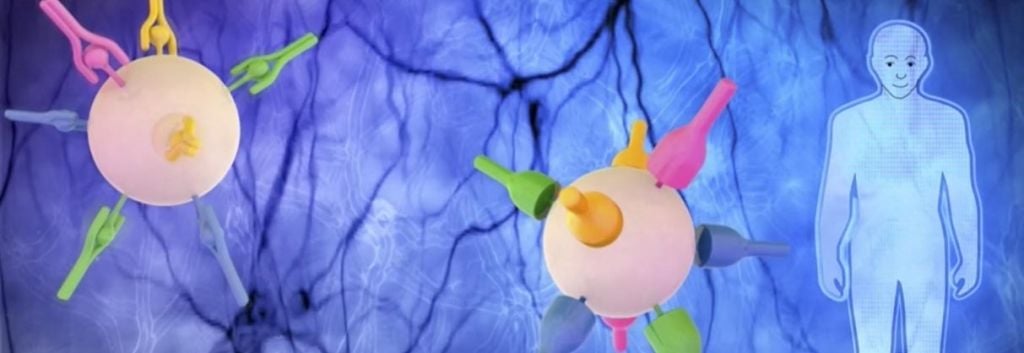World Lupus Day is an initiative to increase the awareness around this disease which affects more than 5 million people worldwide. Last week in Paris, the biotech company Neovacs, which develops an innovative therapy against lupus, had gathered researchers, entrepreneurs and patients’ associations who are fighting the disease. I was there to meet them and learn more about lupus.
Lupus is one of the most common rare diseases, with a prevalence ranging from 4 to 6 in 10,000 people depending on the country (in some countries it’s not considered as a rare disease because prevalence is above the limit of 5/10,000).
Despite the high number of cases, effective treatments against lupus are still missing, and this is mainly because of the complexity of the disease.
Lupus: a complex disease, hard to understand
Lupus is an autoimmune disease caused by a deregulation of the immune system. Usually, after our cells undergo apoptosis and release nucleic material in our body, the macrophages are able to effectively clean it up.
In certain cases, the amount of nucleic material is too important for them to handle, and the immune system takes over with anti-nucleic antibodies (ANA). Anti-nucleic antibodies are present in every person, but for some of us they may start to attack healthy cells (self-tolerance is broken).
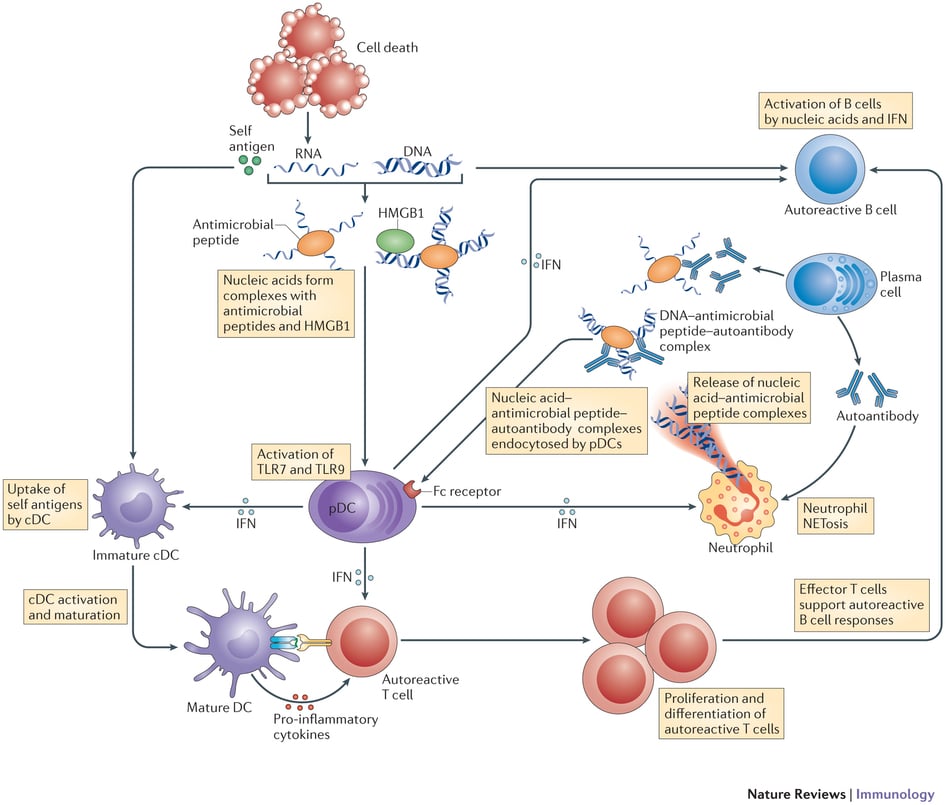
This deregulation of the immune system can be caused be a wide variety of factors (i.e. UV exposure, some viruses, synthetic hormones and sometimes certain drugs…), which always trigger an existing genetic predisposition.
The disease can take several forms and affect different parts of the body. The most visible symptoms are the “butterfly” rashes which affect some patients on their face or the extremities of the fingers which whiten. The difficulty with lupus is that it can also be ‘invisible’ from the exterior and thus harder to diagnose.
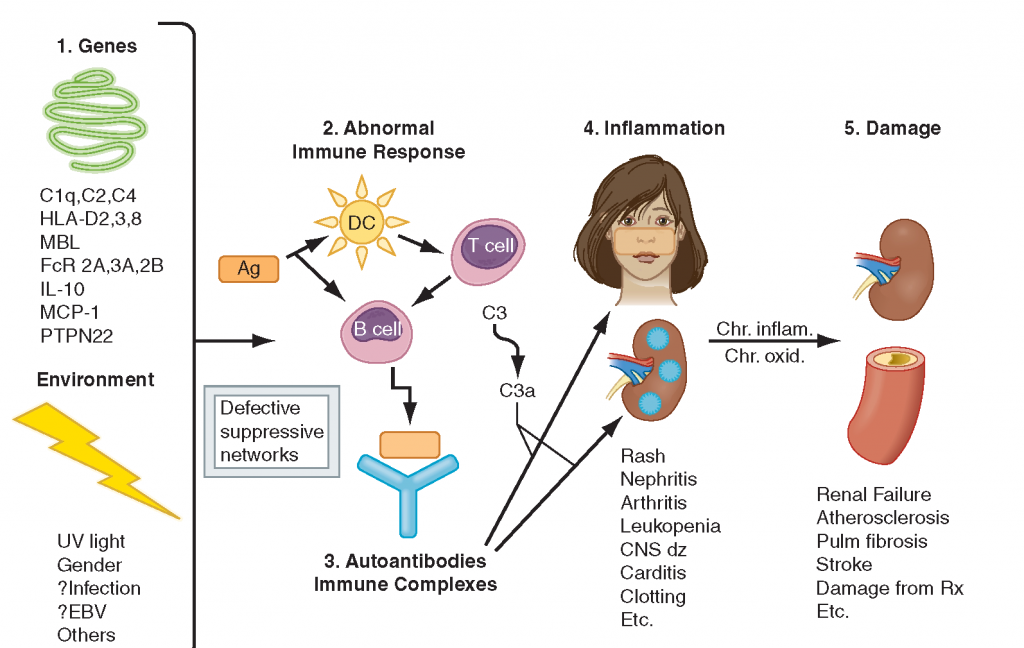
A disease with increasing awareness…but still incurable
Today, doctors are starting to become more aware of this disease (in part because of its democratization by TV character Dr. House which is famous for saying “it’s never lupus”).
The first line of treatment against lupus is always chemical drugs like hydroxychloroquine or corticosteroids to reduce the inflammation, and control the flare-up linked to this chronic disease. Immunosuppressants are also used in certain cases to reduce the damage of the affected organ(s).
Thanks to a better understanding of the mechanisms involved in the disease and also to more targeted therapies, the average survival of lupus patients has dramatically increased over the last 50 years.
However, despite these improvements some severe consequences remain unchanged, such as the evolution of the disease, notably chronic renal failure or tissue lesions (present in 40% of patients since 1978 without any improvement).
That’s why patients urgently need new therapeutic solutions and that’s where biotechnology can help.
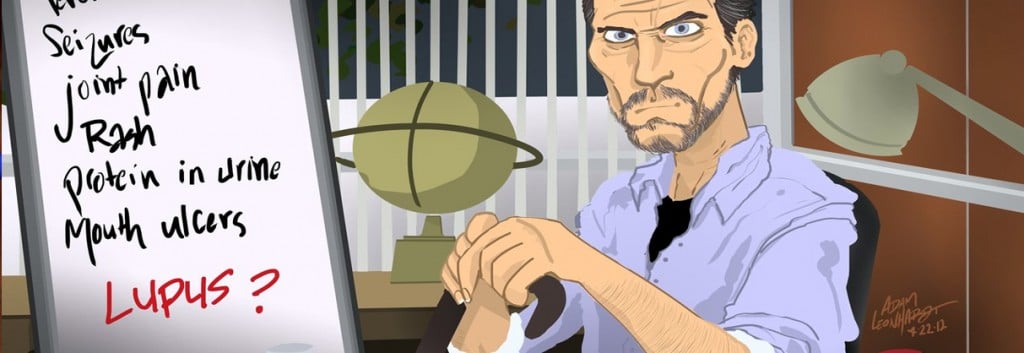
The first therapy to reach the market in 50 years was only in 2011 when GSK acquired marketing rights to the monoclonal antibody Belimumab. However, Belimumab hasn’t been so effective in trials and is today not a first choice for doctors.
Some forms of the disease have also been treated by biological drugs with success. The monoclonal antibody Rituximab, for example, has been proven successful in the treatment of the hematologic form of lupus (antibodies attacking red blood cells) but not in other forms.
Due to the high number of targets and the unmet medical need, 50 experimental drugs are currently studied in clinical trial and less than 10 of them are already in Phase III.
Neovacs: An innovative therapy against lupus
Set apart from these other drugs in clinical trials, Neovacs is developing an interesting approach.
In patients with lupus, there is an elevated level of a specific substance called interferon alpha (IFNα) involved in body’s natural defence system (immune system).
This overproduction is one of the reasons causing the immune system to attack healthy tissues, which in turn triggers dangerous inflammation. Neovacs’ active immunotherapy uses the patient’s own immune system to regulate this inappropriate cytokine production by targeting interferon α.
Neovacs’ technology, called Kinoid, is obtained by chemically linking the cytokine of interest to a foreign carrier protein. When injected into the muscle (intra-muscular) of the patient, the B-lymphocytes of the patient’s immune system develop polyclonal antibodies against the cytokine.
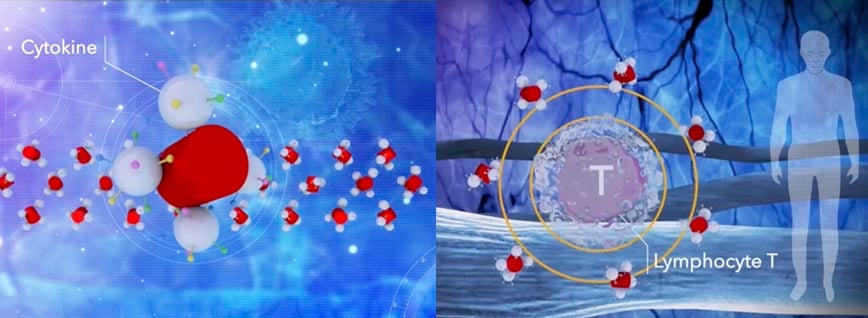
The greatest advantage of this technology is the production of polyclonal antibodies that are similar to those we produce naturally (as opposed to monoclonal antibodies, which are injected and can lead to a resistance after long period of treatment).
Polyclonal antibodies can also recognise several epitopes on the antigen at the same time (as opposed to monoclonal antibodies which can recognize only one epitope), and therefore drastically increase the neutralising capacity of these antibodies.
This drug is currently in Phase IIb in 19 countries throughout Europe, Asia, Latin America and recently the United States. This 18 month trial will enroll 178 patients and results are expected in mid-2017. As Miguel Sieler, CEO of Neovacs, said during our meeting in Paris:
We are determined to develop this treatment as far as we can by doing what we do best, targeting interferon α”.
Another way to fight the disease: through Patient Associations
Patients are always the most important motivation when developing a new drug. World Lupus Day is a good opportunity to remind the importance of patient associations.
Several associations defending patients with lupus or other rare diseases are already exist in France, and their role extends from psychological help for the patients to political activity.
Thanks to their fight, in 2004 France became the first country to adopt a national plan to improve patient care and accelerate research. This plan led to huge improvements for patients and the same strategy is now being adopted for the rest of Europe.
After having been renewed a second time, this plan is now in discussion for a third period. Let’s hope that the decision makers will be wise enough to see the importance of such initiatives.
Lean more about Neovacs here




